

Carbon nanostructures for easier detection of Parkinson's disease. Scripps Research Scientist Awarded $500,000 Grant From Michael J. Fox Foundation To Study Parkinson Disease. Structure of Parkinson’s disease protein identified. Future looks toward stabilizing protein, treatment Quyen Hoang Aerial view of computer generated alpha-synuclein bundle By Susan Chaityn LebovitsOct. 21, 2011.
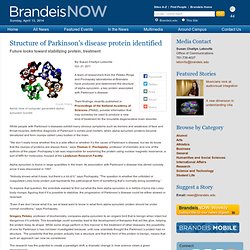
MJFF and The Kinetics Foundation Collaborate on Search for Parkinson's Biomarker. Breastmilk a natural stem cell therapy. Human breastmilk has the potential to help people suffering from diseases including Parkinson's disease and diabetes, according to a researcher at The University of Western Australia.
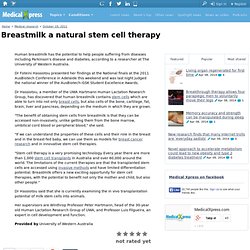
Dr Foteini Hassiotou presented her findings at the National finals at the 2011 AusBiotech Conference in Adelaide this weekend and was last night judged the national winner of the AusBiotech-GSK Student Excellence Awards. Dr Hassiotou, a member of the UWA Hartmann Human Lactation Research Group, has discovered that human breastmilk contains stem cells which are able to turn into not only breast cells, but also cells of the bone, cartilage, fat, brain, liver and pancreas, depending on the medium in which they are grown.
"The benefit of obtaining stem cells from breastmilk is that they can be accessed non-invasively, unlike getting them from the bone marrow, umbilical cord blood or peripheral blood," she said. "Stem cell therapy is a very promising technology. 23andMe uses genetics data to help attack Parkinson’s disease and other ills. Anne Wojcicki, chief executive of genetics firm 23andMe, said today that her company has been able to find a way to attack a rare form of Parkinson’s disease that her husband, Google co-founder Sergey Brin, is susceptible to.
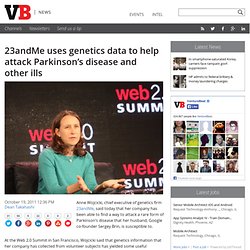
At the Web 2.0 Summit in San Francisco, Wojcicki said that genetics information that her company has collected from volunteer subjects has yielded some useful information about diseases and our genetic predisposition for getting them. So far, in two years, the company has collected genetic data on 125,000 people. Of those, 6,000 are susceptible to Parkinson’s disease. And of those, 200 are susceptible to the rare variant known as LRRK 2 (pronounced “lurk 2″). Of the people who are susceptible to LRRK 2, not everyone has the disease. Next-generation brain stimulation may improve treatment of Parkinson's disease. Parkinson's disease (PD) is a devastating and incurable disease that causes abnormal poverty of movement, involuntary tremor, and lack of coordination.
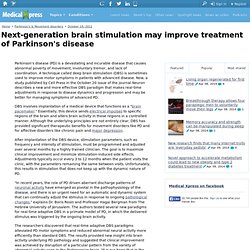
A technique called deep brain stimulation (DBS) is sometimes used to improve motor symptoms in patients with advanced disease. Now, a study published by Cell Press in the October 20 issue of the journal Neuron describes a new and more effective DBS paradigm that makes real-time adjustments in response to disease dynamics and progression and may be better for managing symptoms of advanced PD. DBS involves implantation of a medical device that functions as a "brain pacemaker.
" Essentially, this device sends electrical impulses to specific regions of the brain and alters brain activity in those regions in a controlled manner. Although the underlying principles are not entirely clear, DBS has provided significant therapeutic benefits for movement disorders like PD and for affective disorders like chronic pain and major depression. Computer Games Help People with Parkinson's Disease.
Released jointly by Red Hill Studios and UCSF Playing computer-based physical therapy games can help people with Parkinson’s disease improve their gait and balance, according to a new pilot study led by the UCSF School of Nursing and Red Hill Studios, a California serious games developer.

More than half the subjects in the three-month research project showed small improvements in walking speed, balance and stride length. UCSF and Red Hill were the first research team in the United States to receive federal funding in the burgeoning field of low-cost computerized physical therapy games. Unlike off-the-shelf computer games, these specialized games encourage scientifically tested specific physical movements to help people with functional impairments and diseases. Glenna Dowling, RN, PhD Marsha Melnick, PT, PhD The Red Hill team then designed physical games, similar to Wii and Kinect games, in which subjects win points by moving their bodies in certain ways. Falls prevention in Parkinson's disease. A study carried out by the Primary Care Research Group at the Peninsula College of Medicine and Dentistry, supported by the National Institute for Health Research (NIHR) and NIHR PenCLAHRC, has analysed the results of an exercise programme to prevent falls in those with Parkinson's disease.
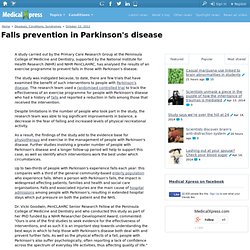
The study was instigated because, to date, there are few trials that have examined the benefit of such interventions to people with Parkinson's disease. The research team used a randomised controlled trial to track the effectiveness of an exercise programme for people with Parkinson's disease who had a history of falls and reported a reduction in falls among those that received the intervention. Despite limitations in the number of people who took part in the study, the research team was able to log significant improvements in balance, a decrease in the fear of falling and increased levels of physical recreational activity. Dr. Ability to ride a bike can aid differential diagnosis of Parkinson's disease in any setting.
Public release date: 6-Oct-2011 [ Print | E-mail Share ] [ Close Window ] Contact: Daphne Watrind.watrin@iospress.nl 31-206-883-355IOS Press.
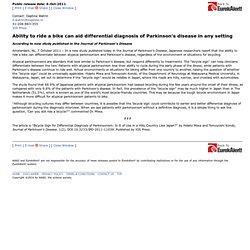
Study first to link mitochondrial dysfunction and alpha-Synuclein multiplication in human fibroblasts. A new study in the Journal of Parkinson's Disease shows for the first time the effects of α-Synuclein (α-syn) gene multiplication on mitochondrial function and susceptibility to oxidative stress in human tissue.
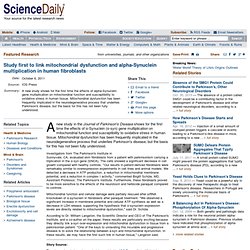
Mitochondrial dysfunction has been frequently implicated in the neurodegenerative process that underlies Parkinson's disease, but the basis for this has not been fully understood. Investigators from The Parkinson's Institute in Sunnyvale, CA, evaluated skin fibroblasts from a patient with parkinsonism carrying a triplication in the α-syn gene (SNCA). The cells showed a significant decrease in cell growth compared with healthy controls. "Our results in patient-derived fibroblasts were remarkably similar to overexpression experiments in cell lines and animal models. Seeds of destruction in Parkinson's disease: Spread of diseased proteins kills neurons.
New research suggests that small "seed" amounts of diseased brain proteins can be taken up by healthy neurons and propagated within them to cause neurodegeneration.
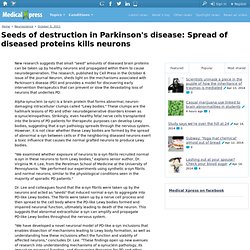
The research, published by Cell Press in the October 6 issue of the journal Neuron, sheds light on the mechanisms associated with Parkinson's disease (PD) and provides a model for discovering early intervention therapeutics that can prevent or slow the devastating loss of neurons that underlies PD. Alpha-synuclein (α-syn) is a brain protein that forms abnormal, neuron-damaging intracellular clumps called "Lewy bodies.
" These clumps are the hallmark lesions of PD and other neurodegenerative disorders known as α-synucleinopathies. Strikingly, even healthy fetal nerve cells transplanted into the brains of PD patients for therapeutic purposes can develop Lewy bodies, suggesting that α-syn pathology spreads through the nervous system. Dr.